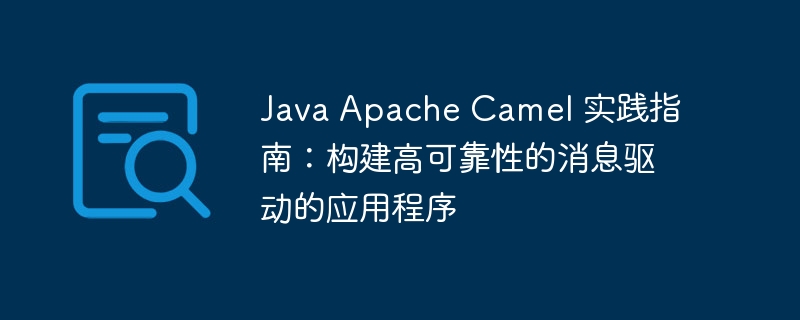
Apache Camel Introduction
Apache Camel is an open source integrated framework used for routing, converting and processing messages between different systems. It supports multiple messaging protocols, such as AMQP, JMS, Http, file system, etc., and provides rich components and connectors to easily integrate different applications and Serve.
Main Features of Apache Camel
-
Rich components and connectors: Apache Camel provides hundreds of components and connectors to easily integrate different applications and services. These components and connectors cover a variety of protocols, formats, and technologies such as AMQP, JMS, HTTP, file systems, databases, and more.
Powerful routing engine: - Apache Camel has a powerful routing engine that can flexibly configure message routing rules. These rules can match based on message attributes, content, or other contextual information. The routing engine provides a variety of routing strategies, such as Load balancing, failover, retry, etc., to ensure the reliability of messages.
Message conversion and processing: - Apache Camel supports a variety of message conversion and processing functions, and can perform format conversion, data extraction, data conversion, data verification, data encryption and other operations on messages. These functions can help developers quickly process and convert messages and improve application development efficiency.
High reliability and scalability: - Apache Camel has high reliability and scalability. It can handle high-throughput data and automatically handle failures and errors. Apache Camel also supports cluster deployment and can be scaled horizontally to meet growing business needs.
Apache Camel application scenarios
Apache Camel can be applied to various scenarios, such as:
Enterprise Service Bus (ESB): - Apache Camel can be used as an enterprise service bus to connect different applications and services and provide functions such as message routing, transformation and processing.
Message-driven architecture (MDA): - Apache Camel can be used to build a message-driven architecture, loosely coupling applications and services, and improving application flexibility.
Microservice architecture: - Apache Camel can be used to build a Microservices architecture, breaking the application into multiple independent microservices and communicating through messages.
Data Integration: - Apache Camel can be used for data integration to extract, transform and load data from different systems into the target system.
Apache Camel Practical Guide
1.
Getting Started
To get started with Apache Camel, you can follow these steps:
Download and install Apache Camel.
- Create a new Apache Camel
project- .
Add Apache Camel dependency.
- Write a simple Apache Camel route.
- Start the Apache Camel project.
-
2. Advanced usage
After mastering the basic usage of Apache Camel, you can further
learn
its advanced usage, such as:
Routing strategies: Understand various routing strategies in Apache Camel, such as load balancing, failover, retry, etc.
- Message conversion and processing: Learn how to use Apache Camel for message conversion and processing, such as format conversion, data extraction, data conversion, data verification, data encryption, etc.
- Cluster deployment: Learn how to deploy Apache Camel in a cluster to meet growing business needs.
-
3. Best Practices
When using Apache Camel, you can follow the following best practices:
- Use appropriate routing strategies: Choose appropriate routing strategies based on actual business needs to improve application performance and reliability.
- Make full use of Apache Camel's components and connectors: Apache Camel provides a rich set of components and connectors that can help developers quickly integrate different applications and services.
- Focus on the performance of message conversion and processing: Apache Camel provides a variety of message conversion and processing functions that can help developers quickly process and convert messages. However, when using these features, you should be aware of their performance implications.
- Ensure the reliability and scalability of the application: Apache Camel has high reliability and scalability, but developers should design the architecture of the application based on actual business needs to ensure the reliability and scalability of the application. .
Conclusion
Apache Camel is a powerful, flexible and easy-to-use message-driven integration framework that can help developers quickly build highly reliable message-driven applications. This article introduces the getting started, advanced usage and best practices of Apache Camel. I hope it will be helpful to you.
The above is the detailed content of Java Apache Camel Practical Guide: Building Highly Reliable Message-Driven Applications. For more information, please follow other related articles on the PHP Chinese website!






